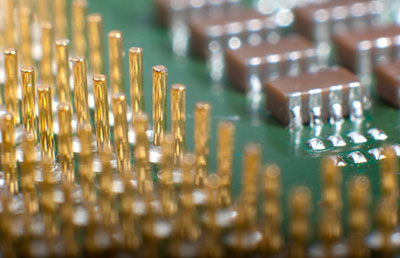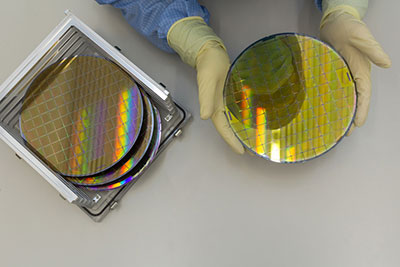Water pumping is essential for multiple applications, such as gardening, cooling, animal & crop farming, etc. Mini water pumps are the core of most of these applications, with different types and varieties. Even though most of these devices are purely mechanical, some have electronic components for better control. We will take a closer look at these pumps, how they work, and how to build one. Take a look!
Contents
- What is a Mini Water Pump?
- How Does a Miniature Water Pump Work?
- Mini Centrifugal Pump
- Mini Diaphragm Pump
- Mini Gear Pump
- Types of Mini Water Pump
- Mini AC Water Pump
- Mini DC Water Pump
- Mini Brushless DC Water Pump
- Mini DC Magnetic Water Pump
- Uses of Mini Water Pump
- Benefits of Miniature Water Pump
- Considerations When Purchasing a Mini Water Pump
- Pump Performance
- Working Medium
- Mechanical Performance
- Cost and Supplier Audit
- How to Make a Miniature Water Pump
- Step 1
- Step 2
- Step 3
- Step 4
- Step 5
- Step 6
- Step 7
- Design Improvements
- How to Use a Mini Water Pump?
- Common Faults of Mini Water Pump and How to Repair?
- Not Starting Normally
- Pump Shaft Does Not Rotate
- Zero Water Flow
- Insufficient Flow
- Excessive Power Consumption
- Excessive Vibrations or Noises
- Overheating Motor
- Summary
What is a Mini Water Pump?
As the name suggests, a mini water pump is a tiny or micro AC or DC water pump usually used to pressurize, circulate, or pump water for different uses. The DC type can have a rating of 3V, 5V, 6V, 12V, or 24V, and you can power it using a battery or solar. The AC type is different because it runs on higher voltages, usually 120V, 220V, or 380V.
How Does a Miniature Water Pump Work?
According to their working principles, you can categorize mini fluid pumps into the following classes.
Mini Centrifugal Pump
A mini centrifugal pump relies on quick impeller rotation to create a powerful centrifugal force that pushes the water to the edges of the cavity/casing. This action creates a vacuum in the middle of the impeller, which sucks more water in through the inlet pipe, then pushes it out to the outlet pipe at the edge.
Self-priming pumps are centrifugal pumps that do not need chamber or suction pipe filling before starting. The centrifugal force automatically pulls water up, so there's no need for a bottom valve on the suction pipe's inlet.
Mini Diaphragm Pump
Diaphragm pumps are quite different because they don't use impellers to push the water. Instead, they have a motor-driven eccentric wheel and connecting rod. These components drive the diaphragm's oscillating movement, creating a complete pumping action with valve plates controlling the inlet and outlet.
The pneumatic diaphragm pump is a variation of this pump, and it has a separate cylinder cavity to protect the movable column from the corrosive liquid.
Mini Gear Pump
Instead of using an impeller, this pump runs two gears, creating a low-pressure region when the teeth of the two rotate away from each other. Water flows in from this section then the teeth push it to form a high-pressure area on the other side as the two cogs drive into each other. The outlet sits at this side to discharge the pressurized liquid.
Types of Mini Water Pump
There are four mini types of water pumps considering the driving motor.
Mini AC Water Pump
Commutation on an AC pump resonates with the frequency of the mains, which could be 50Hz or 60Hz. It does not have any electronic components, which means it can withstand high operating temperatures.
The device is also affordable and, compared to a brushless DC water pump, has a head that is 5-10x more.
Mini DC Water Pump
The magnet and carbon brushes remain stationary as the coil and commutator rotate in a DC brush pump. This pump is also affordable, and the commutator & brushes complete the alternating direction of the current.
Mini Brushless DC Water Pump
As the name suggests, this miniature brushless pump features a brushless DC motor, making it highly energy-efficient and affordable.
Mini DC Magnetic Water Pump
A magnetic DC water pump has electronic component commutation, high-performance, wear-resistant ceramic sleeve & shaft, and no carbon brushes. The sleeve integrates with the magnet via injection molding, resulting in a durable design. This magnetic pump is also highly efficient, operates quietly, and can do hot water circulation.
Uses of Mini Water Pump
Mini water pumps have several applications, which include the following areas.
- Soilless culture/ Hydroponics
- Garden herbs
- Pet drinking water
- Humidifiers
- Fish tank
- Fountains
- Green wall decoration
- Circulating water and coolant in engines and appliances
Special Offer: Get $200 off your order!
Email [email protected] to get started!
Benefits of Miniature Water Pump
- Portable
- Lightweight
- Energy efficient
- Quick response
- Affordable
- Quiet
- Durable and reliable
- High control accuracy
- Occupies a small space while delivering the same flow rate
Considerations When Purchasing a Mini Water Pump
Since there are different types of miniature water pumps, you should consider the following factors before buying one.
Pump Performance
The device should meet the application requirement parameters, such as head, flow rate, temperature, etc.
Working Medium
Even though the medium under consideration is water, you can choose to use the pump for other mediums, such as flammable or corrosive liquids. In such cases, ensure it can safely handle these liquids without experiencing damages or leaks.
Mechanical Performance
The desirable mechanical performance involves having low noise & vibrations and maximum reliability.
Cost and Supplier Audit
Since it is a mechanical device, the mini motor pump will wear and need replacements at some point. Apart from ensuring it has a reasonable price, check the pump's quality, after-sales service, availability of spare parts, and audit the manufacturer.
How to Make a Miniature Water Pump
Making a mini electric pump is a simple process, and you need the following parts.
- A tiny motor
- Thin, rigid plastic sheet, like the one used to make food containers
- A plastic candle holder
- Hot glue
Step 1
The first step is to build the impeller. It sits in the water pump housing, so set this up first using the plastic candle holder. If not available, use two Gatorade lids.
Step 2
Cut a long, thin piece on the same plastic sheet, then split it into four smaller pieces. Stick these pieces to the plastic disk cut earlier, distributed evenly around its face.
Step 3
Drill a hole for the shaft in the middle of the face of the water pump housing. Next, attach the motor to the water pump housing using glue and ensure you seal all the motor's holes to keep water from getting in.
Step 4
Attach the impeller to the motor's shaft inside the pump housing and make sure it spins freely without touching any surface.
Step 5
Trace out a fitting disk for sealing the pump housing on the plastic sheet. Drill a straw-size hole in the middle of this disk and another one on the edge of the housing (inlet and outlet).
Step 6
Glue straws to these holes and pour enough hot glue around them to prevent leaks. Next, glue the disk to seal the housing and ensure the impeller blades don't touch the cover.
Step 7
Test the miniature water pump. Connect it to a power source and suck water through the outlet straw to prime the system. If you have a high water head, try to use a bigger motor or lay the pump horizontally to increase the output pressure.
Design Improvements
You can also improve the design to increase the water flow and pressure by placing the outlet of the electric water pump tangential to the housing instead of perpendicular.
How to Use a Mini Water Pump?
- Check the insulation resistance between the windings & the ground. Also, check the resistance between the windings themselves. It should not exceed 1MΩ.
- Look for any loose bolts, damaged plugs, and a stuck impeller.
- Ensure the motor wiring and steering are correct.
- Avoid starting and stopping the pump frequently.
- If the suction pipe has a bottom valve, fill water from the outlet to prime the pump.
- After filling it with water, loosen the bleed screw to remove air from the system.
- For long-term shutdown, empty the pump chamber by unscrewing the drain plug.

A worn-out water pump, caused mainly by rusting
- Use a sewage pump if the water contains high sediment concentrations (soil, sand, debris).
- Don't run the pump for more than two minutes without water in the pump chamber.
- Avoid starting it more than six times per hour.
- If the motor runs at low speed or fails to run three seconds after turning on, turn it off for inspection.
- The temperature should not exceed 75°C, and voltage fluctuations should not exceed +/-5% of the rated value.
- If installing the pump with the machine down, ensure the mini water pump motor and junction box are not in a position to get damp.
- When using a high-lift pump for low-lift operations, fit a gate valve on the outlet pipe.
Common Faults of Mini Water Pump and How to Repair?
A small water pump failure can include any of the following:
Not Starting Normally
Check the fuse, contact, or stator winding. Repair or replace the damaged part.
Pump Shaft Does Not Rotate
It could be a blockage, worn bearings, or a collision between the impeller and adjacent parts. Solution? Undo the blockage, replace the shaft bearing, or adjust the impeller's gap.
Zero Water Flow
If the impeller spins incorrectly, adjust the motor line. If damaged, replace the part. However, it could be due to other reasons such as a blockage of the suction pipe or bottom valve, a high suction stroke, or inadequate water diversion caused by leakages.
Insufficient Flow
A low water flow could be due to pipeline blockages, a damaged impeller, a high water head, or a stuck bottom valve that does not open fully.

Two electric motorized portable water pumps
Excessive Power Consumption
Jammed impellers create more friction, requiring more power to turn. A bent shaft can also increase friction, so straighten or replace it.
Excessive Vibrations or Noises
Such water pump issues usually occur due to loose parts, and the solution is to tighten them. But it could be a bent shaft or a worn-out bearing or impeller.
Overheating Motor
Low voltage can cause overheating, so check this first. Damaged or stuck centrifugal switch contacts can overheat the mini water pump motor, or it could be due to thin cables used in the wiring.
Summary
In conclusion, a miniature pump is a handy tool for multiple applications, and it comes in different types classified under several categories. Building a mini submersible pump is somewhat challenging for a garden fountain tool or other uses, but the centrifugal type is relatively easy to make. If you encounter any challenges when building one for your project, contact us for more details.
Special Offer: Get $200 off your order!
Email [email protected] to get started!






